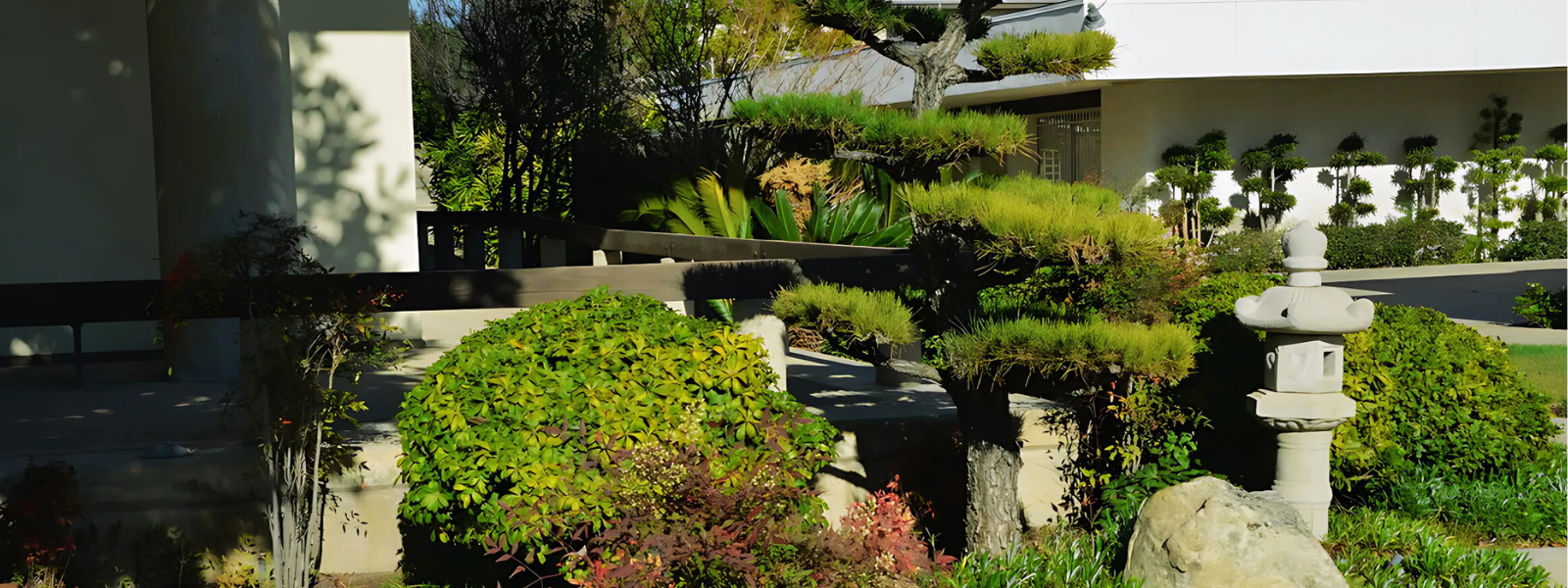The Other Side of Goodbye
Recently I was going through issues of Temple Times from previous years and stopped at a beautiful photo filled with smiles that looked very familiar to me. Last year around this time those of us who travelled on the YBICSE program visiting our mother temple and other temples were busy sharing our experiences and the photo was the one our Megan Miyamoto posted with her wonderful reflections. A photo from the summer of last year now feels like a century ago for us in this pandemic world, but it brought back my fond memories with them, and I’d like to share my reflective Dharma-talk on it with you too. It was titled “The Other Side of Goodbye.”
Momoe Yamaguchi, a legendary star in 1970s Japan who retired at the height of her popularity, put down the microphone quietly and tearfully left the stage in October 1980 after singing her final song—called “The Other Side of Goodbye.”
At the age of 14, Yamaguchi shot up to stardom, but she announced her retirement at 21 because she was getting married. Her last song was included with messages to fans and others who supported her. “You told me that a star billions of light years away has also its life span. You also told me a flower that blooms every season has an endless life. Thank you, I cherish our moments. Here is my last song for you instead of saying goodbye.”
This song streamed into my earphones as the airplane headed back to San Francisco. Looking around, I saw the familiar faces of our BCA Young Buddhist International Cultural Study Exchange youth, sleeping peacefully as their Japan trip was coming to an end.
I met most of them for the first time July 15 in San Francisco when the YBICSE trip began. From that point on, they dashed through life-deepening experiences every day. They traveled to Kyoto, where they explored the heritage of the Jodo Shinshu tradition. They had found another family through temple home stays and interacting with members from other international districts. Some of them had received their Dharma names.
When we got on this plane to San Francisco, they looked similar on the outside. But they must have been completely transformed from the day I first met them. They grew up big in their hearts and as people.
I too experienced quite a change on this trip, a bittersweet change. I had not visited Japan for two years and I was surprised to see many familiar places being reconstructed. It looked like an unknown world to me.
I thought of myself as Urashima Taro, a character in a famous Japanese folktale. In the tale, Urashima Taro, a young fisherman who lives in a Japanese village, visits the Dragon Palace under the sea after saving a turtle’s life. He is welcomed with delicious treats and fish dances.
After a few days, he decides to return home from the Dragon Palace. When he arrives in the village, all things seem strange to him. He returns to a very different world as an old man. He is hit by the reality of change.
It is funny that I was seeing the positive changes in the young participants with fond feelings, while I was seeing my own changes as bittersweet. It didn’t matter that I looked at the changes through the filters of good or bad. One thing was for sure—things are constantly changing and we are never able to come back to the same place. Young and old alike.
Looking around the airplane cabin, I felt relieved though in realizing that we all have the final destination.
Amida Buddha’s Pure Land is often expressed as a place we “come back” to even for those of us who have not been there. It is our new home, the place we should truly belong to. So, from Buddha’s point of view, we are made to “come back” to it.
Shinran Shonin read the kanji letter “come” as “come back,” and said that working of bringing us there (“come”) is the Other Power. The Pure Land is not the realm we go to, but instead, is the realm we are made to come to.
We can travel through journeys and turbulences with true ease of mind when we realize there is a place that awaits us unwaveringly, the true destination that Buddha had prepared where we would be our true self.
Because we know this, we have the courage to put our microphone quietly on the floor and look up every time. Departure is entry to the new world.
In our case, Jodo Shinshu tradition, which our youth had deepened their understanding through their journey, shows that we will eventually be brought into the world beyond journeys—to the other side of goodbye.
In Gassho,
Rev. Sala Sekiya

